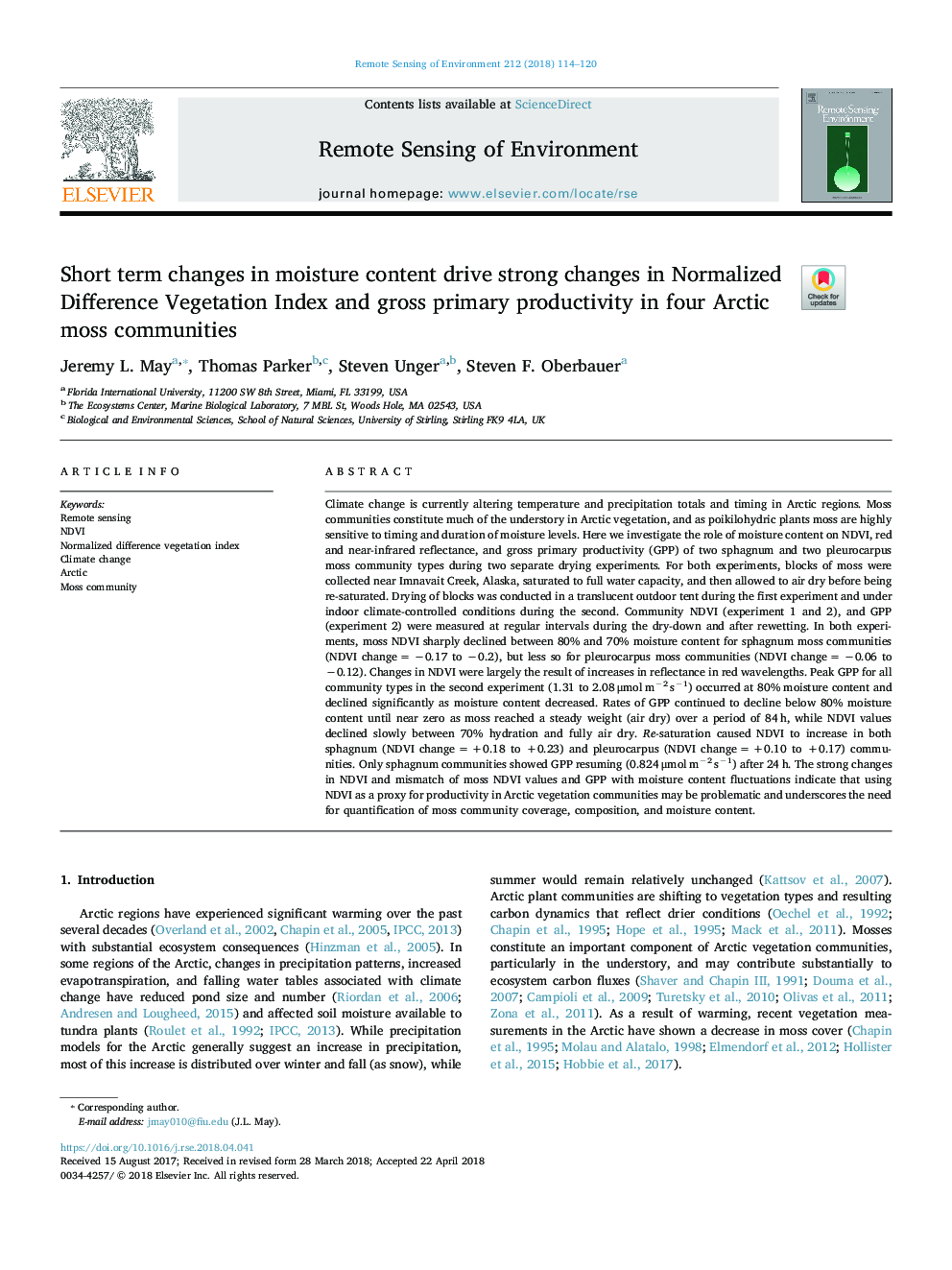| Article ID | Journal | Published Year | Pages | File Type |
|---|---|---|---|---|
| 8866532 | Remote Sensing of Environment | 2018 | 7 Pages |
Abstract
Climate change is currently altering temperature and precipitation totals and timing in Arctic regions. Moss communities constitute much of the understory in Arctic vegetation, and as poikilohydric plants moss are highly sensitive to timing and duration of moisture levels. Here we investigate the role of moisture content on NDVI, red and near-infrared reflectance, and gross primary productivity (GPP) of two sphagnum and two pleurocarpus moss community types during two separate drying experiments. For both experiments, blocks of moss were collected near Imnavait Creek, Alaska, saturated to full water capacity, and then allowed to air dry before being re-saturated. Drying of blocks was conducted in a translucent outdoor tent during the first experiment and under indoor climate-controlled conditions during the second. Community NDVI (experiment 1 and 2), and GPP (experiment 2) were measured at regular intervals during the dry-down and after rewetting. In both experiments, moss NDVI sharply declined between 80% and 70% moisture content for sphagnum moss communities (NDVI changeâ¯=â¯â0.17 to â0.2), but less so for pleurocarpus moss communities (NDVI changeâ¯=â¯â0.06 to â0.12). Changes in NDVI were largely the result of increases in reflectance in red wavelengths. Peak GPP for all community types in the second experiment (1.31 to 2.08â¯Î¼molâ¯mâ2â¯sâ1) occurred at 80% moisture content and declined significantly as moisture content decreased. Rates of GPP continued to decline below 80% moisture content until near zero as moss reached a steady weight (air dry) over a period of 84â¯h, while NDVI values declined slowly between 70% hydration and fully air dry. Re-saturation caused NDVI to increase in both sphagnum (NDVI changeâ¯=â¯+0.18 to +0.23) and pleurocarpus (NDVI changeâ¯=â¯+0.10 to +0.17) communities. Only sphagnum communities showed GPP resuming (0.824â¯Î¼molâ¯mâ2â¯sâ1) after 24â¯h. The strong changes in NDVI and mismatch of moss NDVI values and GPP with moisture content fluctuations indicate that using NDVI as a proxy for productivity in Arctic vegetation communities may be problematic and underscores the need for quantification of moss community coverage, composition, and moisture content.
Related Topics
Physical Sciences and Engineering
Earth and Planetary Sciences
Computers in Earth Sciences
Authors
Jeremy L. May, Thomas Parker, Steven Unger, Steven F. Oberbauer,
